Samantha in Secondary

10 Ideas for Teaching Long Way Down by Jason Reynolds
October 26, 2021 by Samantha H.
Long Way Down by Jason Reynolds is a high interest novel in verse that will grab your students’ attention from the first page and never let them go. Set across the span of only one minute, Jason takes you on a thrilling, thought-provoking journey as the main character, Will, takes the elevator ride of his life. If you haven’t had the chance to read this novel, I highly recommend you grab a copy right here . Although it’s a very quick read, the themes and ideas pack a huge punch. I’ve put together 10 fresh ideas for implementing Long Way Down by Jason Reynolds into your secondary English Language Arts classroom.
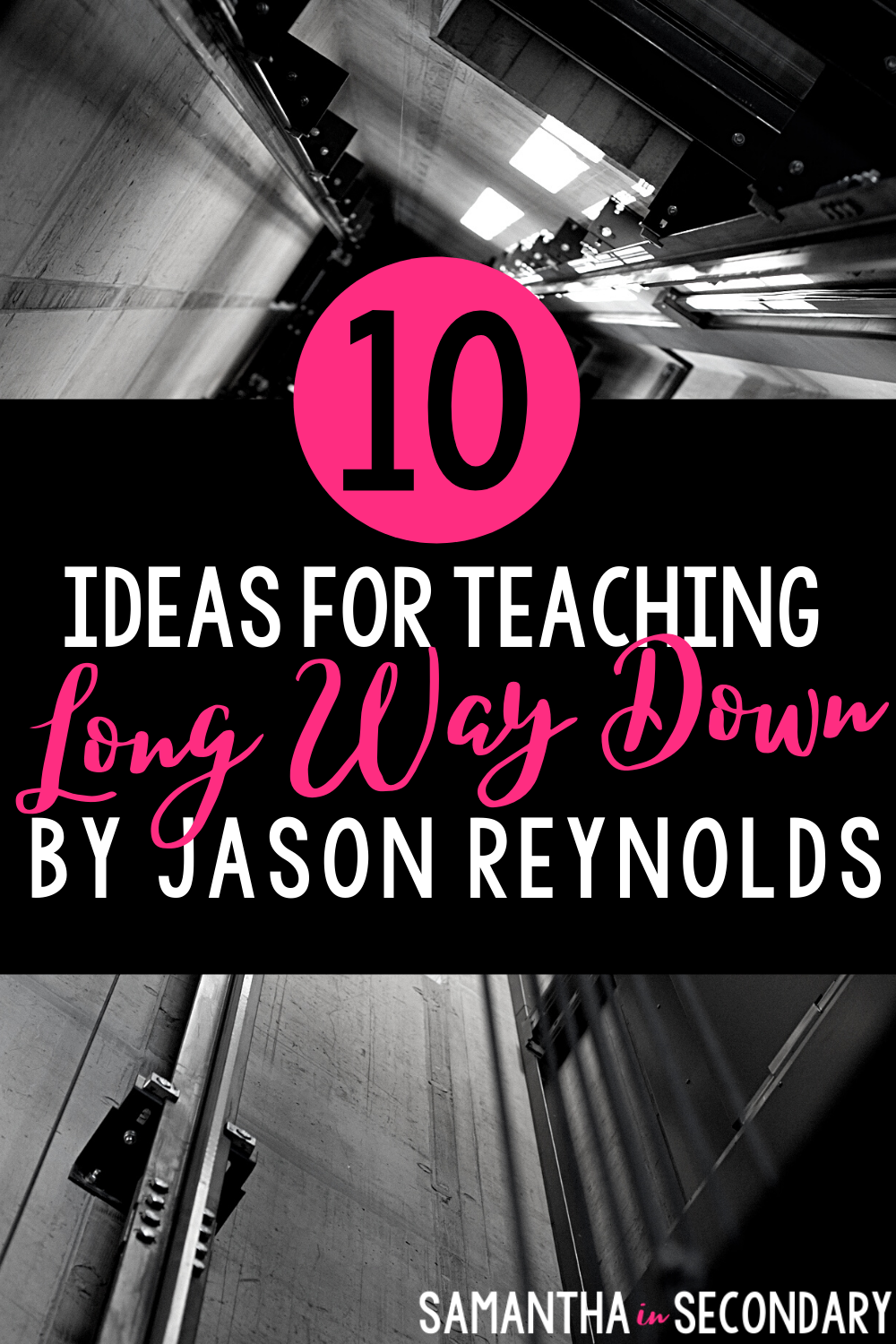
1. Character Study
Understand the characters of the novel on a deeper level. Have students complete a character study on Will (or any of the other characters he sees throughout the novel). A unique resource you might enjoy is this Character Autopsy Project . This engaging resource helps students “pick apart” a character from any text and analyze them while focusing on various body parts. This would be an excellent way to explore Will’s deeper motives as he takes his ride.
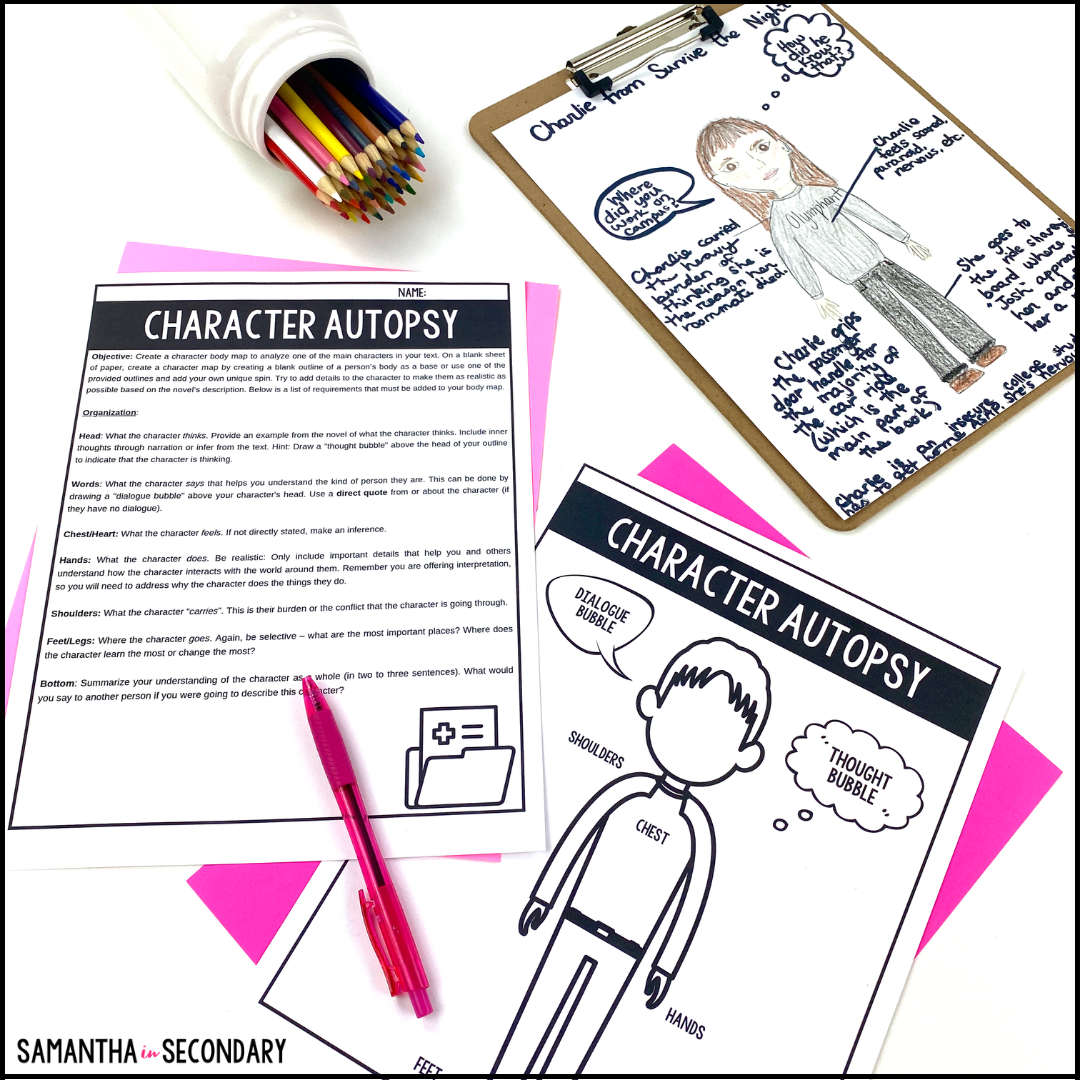
2. Study Anagrams
Anagrams appear throughout the novel. Create a mini-lesson where students study how Will’s anagrams are applicable to the novel, or have them come up with a list of possibilities they think fit into the novel’s themes. They will be puzzled and intrigued as they explore Reynolds’ unique use of language. What does ALIVE = A VEIL really mean?
3. Analyze Time Stamps
Point out the time stamps for each chapter and have a discussion with students. Does the novel actually happen as Will describes it? Is it a dream of sorts? Does that make the “lesson” any less important to Will? Would the novel be different if Reynolds had chosen not to include the time stamps?
4. Create a Soundtrack
Have students think about the progression of the novel in terms of music by having them create a soundtrack. Students can select songs that represent characters, or music that would accompany the plot development. If you want a resource already done for you, check out my Character Soundtrack Project .
5. Is Revenge Worth It? Discussion
A central theme to Love Way Down is how, as Ghandi famously said, “an eye for an eye leaves everyone blind”. Students can discuss the concept of revenge, if it’s worth it, and what the consequences are of pursuing revenge.
6. Explore the Graphic Novel Adaptation
The images in this adaptation are both beautiful and powerful . Even if you’ve read the novel, it is well worth the investment to get a copy of the graphic novel. You can compare depictions, discuss illustrative choices, or you can just outright read the graphic novel in place of the original. Analyzing the text next to the powerful illustrations lends itself to plenty of upper-level thinking activities.
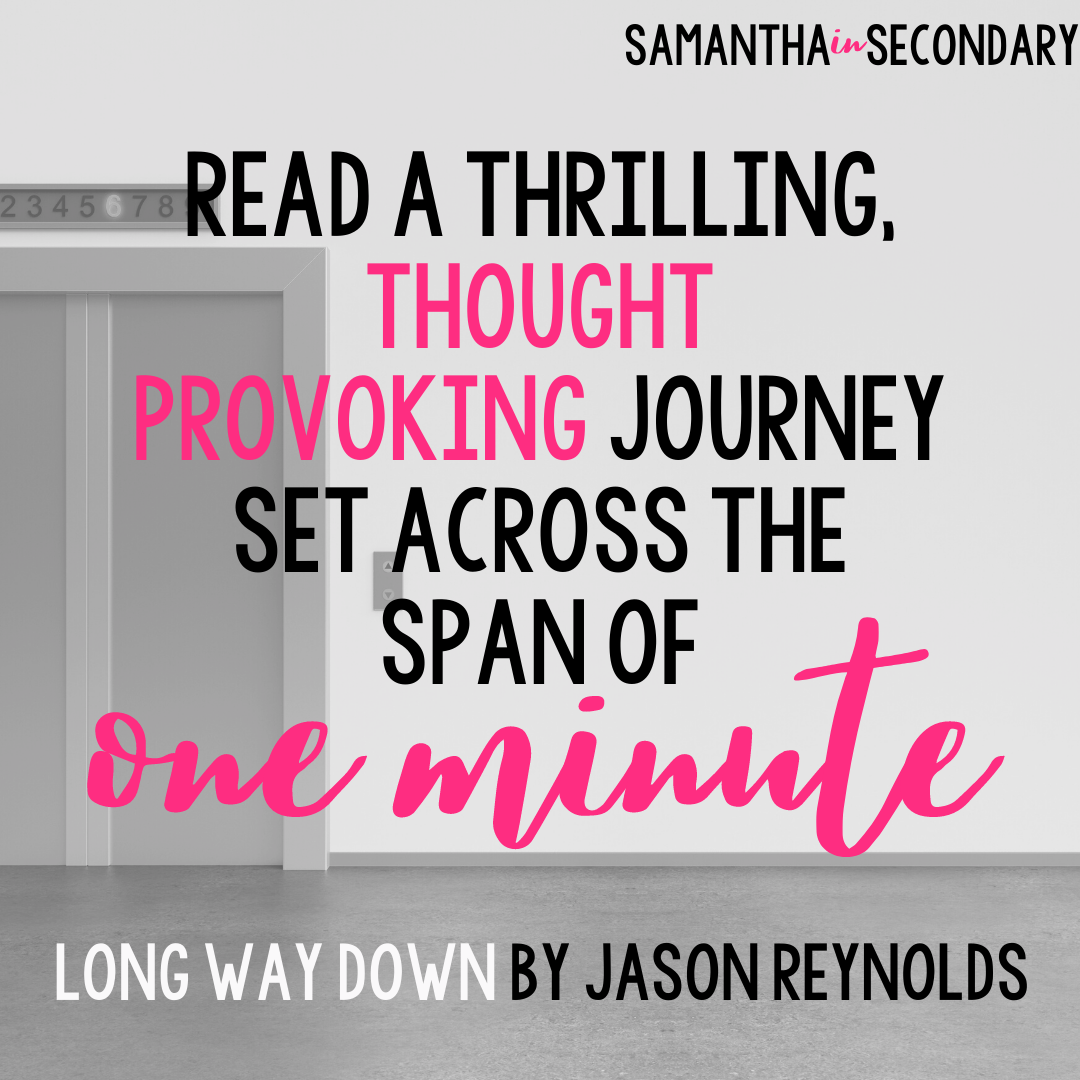
7. Cast the Movie
This activity would be an excellent accompaniment to the soundtrack activity. Pair together to create not only a soundtrack for the “film” but the actors who would portray the characters as well. Why might certain actors work better than others?
8. The Rules We Live By Discussion
Have students think about what “rules” we live by. They can think of it in terms of their age, their specific community, or in broader senses like our country or as humans. This can be a personal assignment you give in a journal, or a group project that students present as part of a mini-lesson. Have students create attractive posters to display their ideas.
9. Dialogue Writing
The novel follows Will’s stream of consciousness. We see fragments of his memories and thought processes as he meets different people from his life. Have students think creatively and “fill in the blanks” of conversation between Will and the other characters. Alternatively, you can adjust so students can create a comic strip depicting the full scene from the novel. You can find my done-for-you Long Way Down Dialogue Writing assignment here .
10. Personal Journal Project
Some students may feel more comfortable sharing their thoughts in a more private manner. Many of the assignments listed here can be adapted to independent work that students can complete as they read through the novel. They may feel more at liberty to express their personal views, hardships, and growth when they know that their work isn’t going to be shared with everyone (although you may still try and encourage them to share snippets with a small group). Have students keep a journal of these ideas as you read.
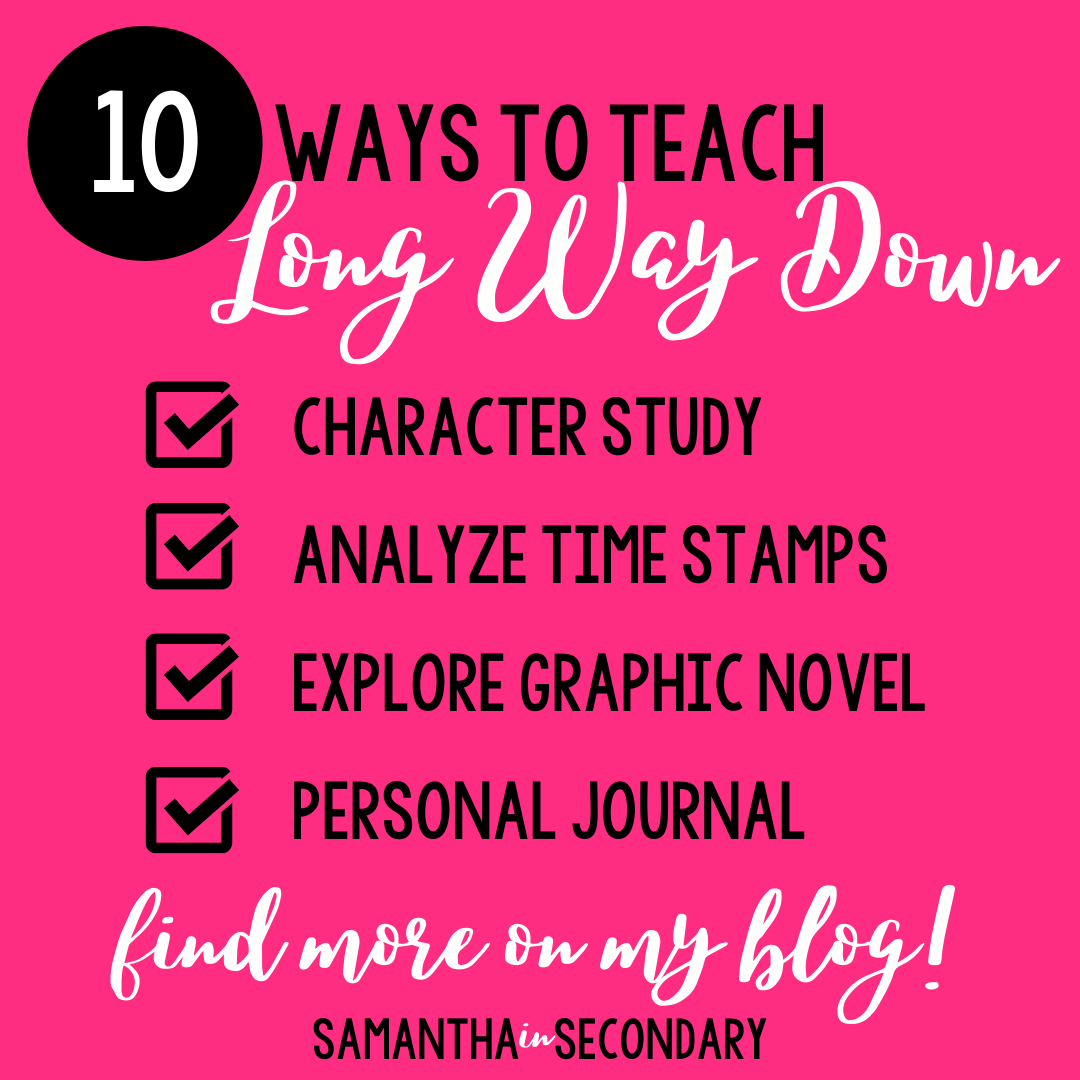
Bonus: Podcast Pairing
After teaching this unit several times, I’ve found that one of my favorite activities that has had a profound impact on my students years after teaching it is to pair it with an episode of This American Life called “ Harper High School “. Use my Podcast Listening Activities for an engaging, eye-opening activity to pair with the novel.
Grab My Done-For-You Long Way Down Novel Unit
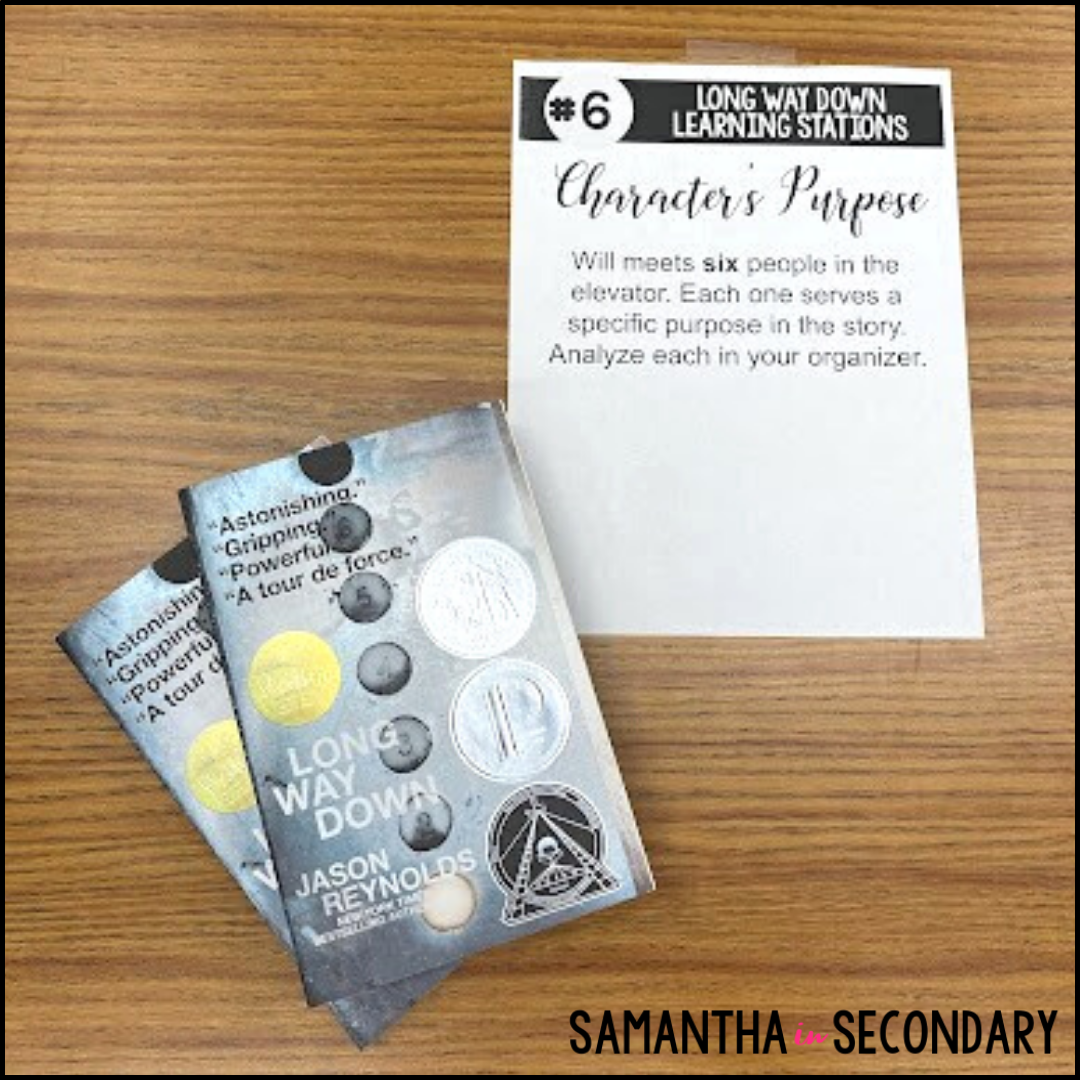
If you’re loving these ideas and you want to get them all in one complete resource, you can find my FULL NOVEL BUNDLE here . When you get the full novel resource, you are getting the best of all of my activities packaged at 20% off the original resource price. This novel unit will engage your students and allow them to think creatively and deeply as they read Long Way Down .
Long Way Down is truly an amazing read, sure to keep your students engaged and opening the door for some great discussions and learning opportunities. Do you teach Long Way Down ? I’d love to hear some of your favorite activity ideas in the comments below or on IG or Facebook .
Happy teaching!

Subscribe to the newsletter to keep up to date on all things Samantha in Secondary.

Long Way Down
Jason reynolds, ask litcharts ai: the answer to your questions.
Welcome to the LitCharts study guide on Jason Reynolds's Long Way Down . Created by the original team behind SparkNotes, LitCharts are the world's best literature guides.
Long Way Down: Introduction
Long way down: plot summary, long way down: detailed summary & analysis, long way down: themes, long way down: quotes, long way down: characters, long way down: symbols, long way down: theme wheel, brief biography of jason reynolds.

Historical Context of Long Way Down
Other books related to long way down.
- Full Title: Long Way Down
- When Written: 2016-2017
- Where Written: Washington, D.C.
- When Published: 2017
- Literary Period: Contemporary
- Genre: Young Adult Verse Novel; Issue Novel
- Setting: An unnamed, urban American neighborhood
- Climax: Shawn’s ghost gets on the elevator.
- Antagonist: Violence; The Rules
- Point of View: First Person
Extra Credit for Long Way Down
Multitasking. Some of Reynold’s first successful works were partially written during slow times at the Rag and Bone store he managed.
Spin a Yarn. Though Reynolds has said he no longer crochets to unwind, he used to be an avid crochet hobbyist. Crochet, he’s said, taught him the value of going slowly and taking life one step—or one stitch—at a time.


Teaching Long Way Down: Mind Map Project
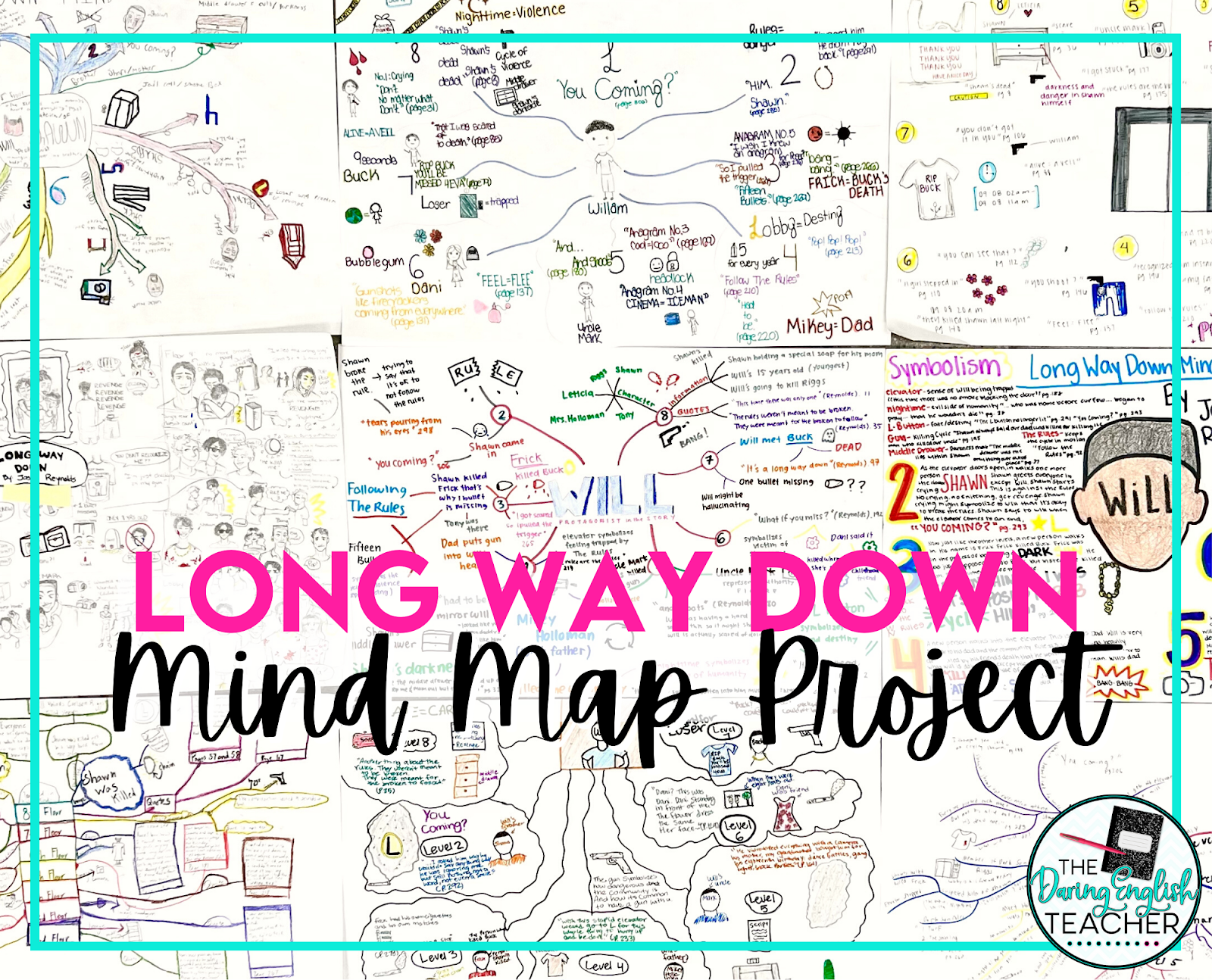
If you are looking for an engaging activity to complete with your students as you read Jason Reynolds’ verse novel Long Way Down, I’ve got the perfect thing for you: a mind map.
Having students create a mind map as you read (or listen to – the Audible read by Reynolds himself is amazing) the book is a terrific way to have your students focus on key events in the book. I have my students complete this activity as part of my Long Way Down teaching unit .
How to Mind Map
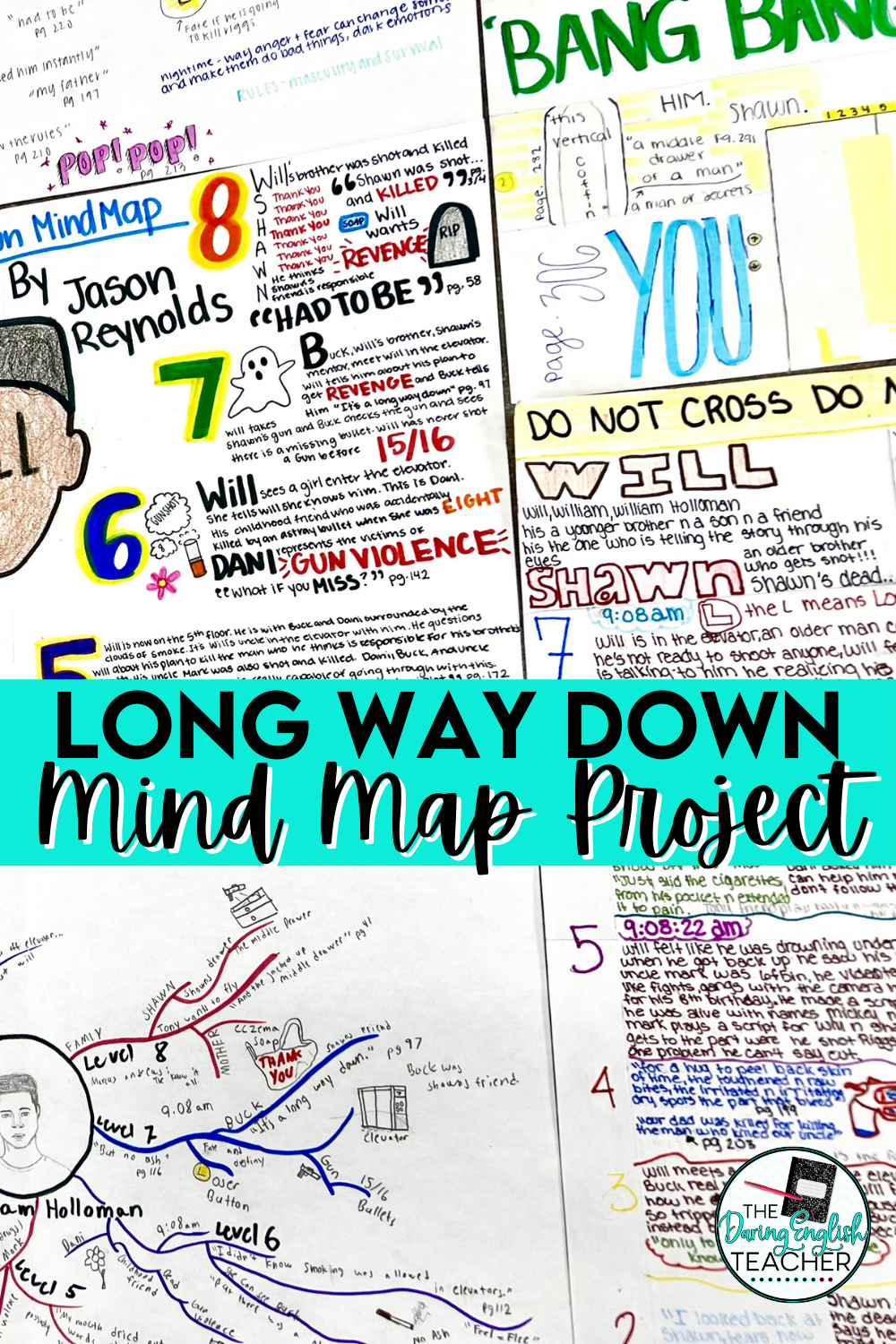
When I introduce mind mapping to my students, I encourage them to include quotes, words, illustrations, and color on their mind maps. I also show them the best and most-detailed mind maps I can find on Google images just to show students examples of what I am looking for. I also encourage students to bring in their own art supplies, but I also make it a point to supply my students with markers and colored pencils.
Mind Mapping Long Way Down
When I teach Long Way Down, I have my students create a mind map as we read. I choose to have this be an activity that they complete as we read rather than afterward so that the content of the book sticks with them.
I introduce the mind map activity to students after we start reading. The ideal time to introduce the Long Way Down mind map is once Will reaches the elevator and before reading level 7. At this point in reading the novel, I introduce the mind map and spend at least one class period having students work on it before continuing on.
When I first introduce the mind map, I explain to students that they can create it as a traditional mind map with Will in the center or that they can create it vertically to visually match the elevator that Will uses to go down to the lobby.
Mind Map Day 1
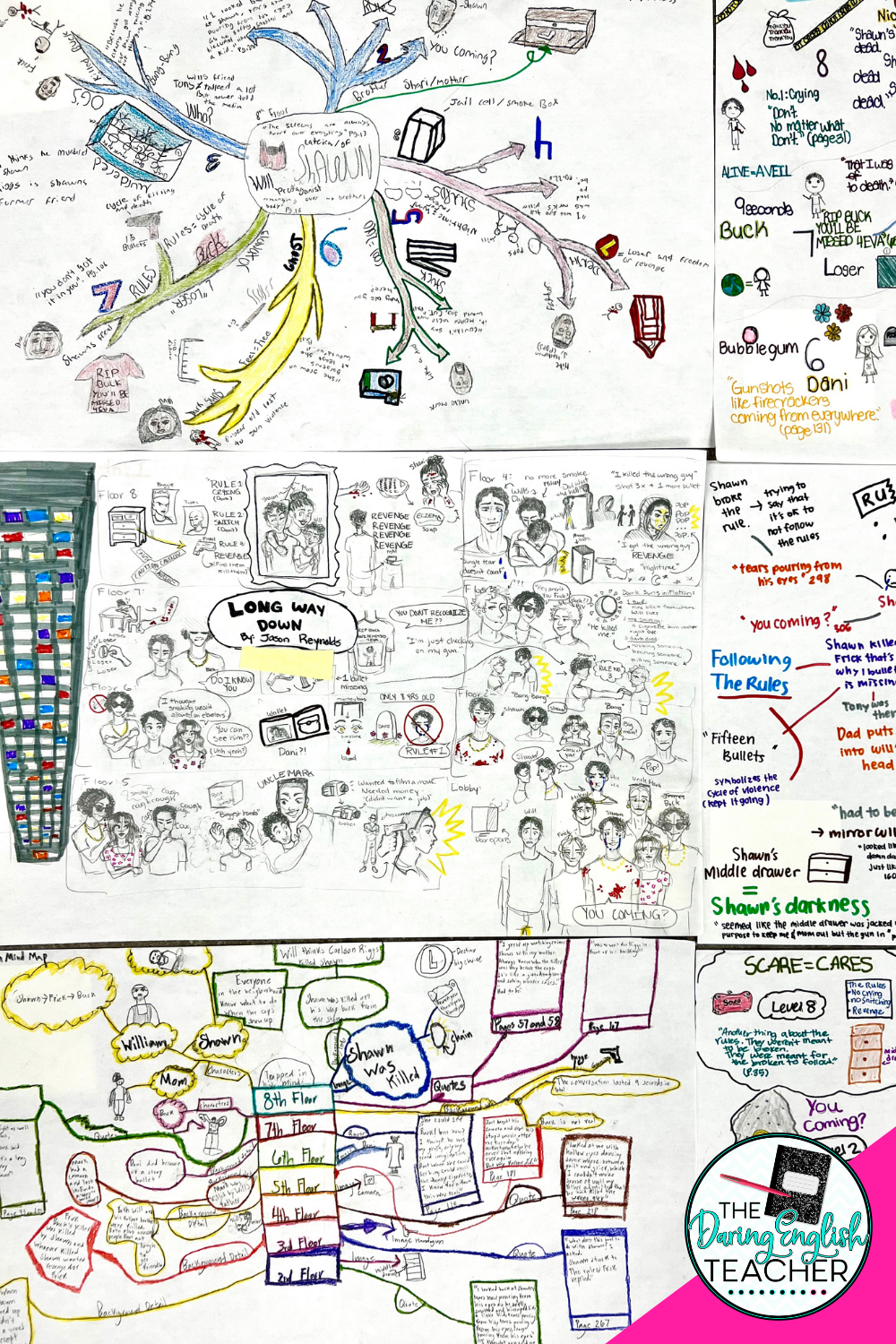
- Information about Shawn
- Two cited quotes
- Three details about what has happened to Will
- One illustration that represents the start of the novel
- Continuing the Mind Map
After students create the start of the mind map, we then continue to read. I teach with 55-minute class periods, and so we read only one level a day. Some days I will have review questions for the students to respond to either as a class or individually immediately after the level. Other days, we just discuss what we read, and then students use the remaining time in class to work on their mind maps.
For each level, I have students include the following information on their mind maps:
- 1 cited quote
- Information about the person who stepped onto the elevator with Will
- Three important details
- At least one illustration that represents the level
- Completing the Mind Map
Toward the end of the novel, I usually take some time to discuss the symbolism inside the book with my students. We discuss symbols such as the gun, the middle drawer, the nighttime, the elevator, and the rules, and then I make sure that the students have incorporated these symbols onto the map as well. Usually, students have already included most of the novel’s symbols onto their mind maps, and they are pretty impressed that they captured the book’s symbolism without even knowing it.
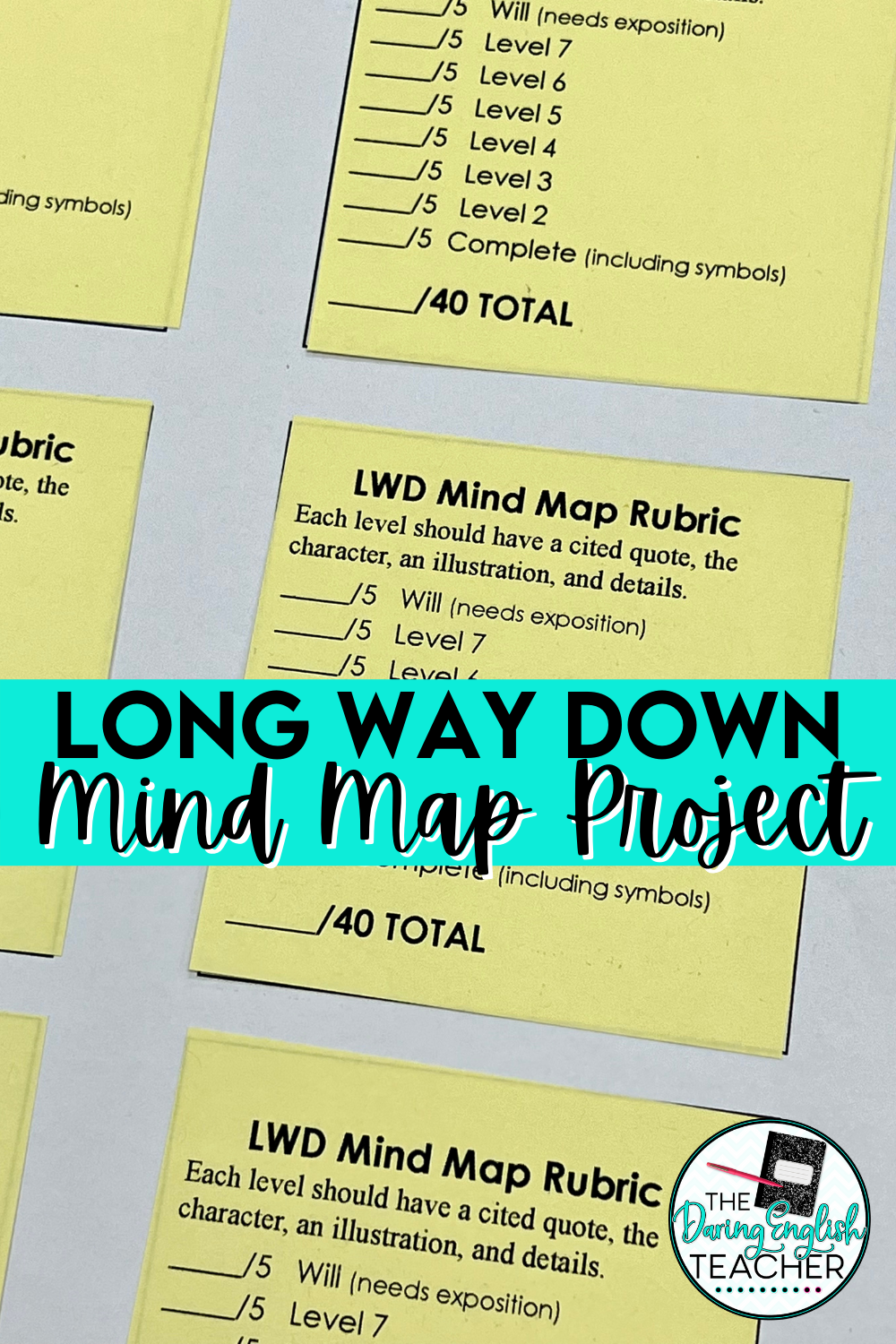
At the end of the novel, I have my students use their mind maps as they take the final Long Way Down test.
Grading the Mind Maps
Throughout this entire process, I make sure that I emphasize that I am not assessing my students’ artistic abilities. However, I do make sure that they understand my expectations. I expect that my students will put effort into this assignment. I expect that they will incorporate color somewhere on their mind map (this helps with the effort). I also expect that they work on their mind map with each level that we read.
When I collect the mind maps, I assess them for overall completeness. I look to see that for each level, students included a cited quote, three details, an illustration, and information about the character who joined Will on the elevator. Overall, I also check the map to make sure that students included at least three of the novel’s symbols onto the mind map. Typically, I assign five points for each level, five points for the symbols, and five points for the introduction of the novel.
More Ideas for Teaching Long Way Down
25 Ideas for Teaching Long Way Down
Subscribe to my email list.
Subscribe to receive freebies, teaching ideas, and my latest content by email.
I won’t send you spam. Unsubscribe at any time.
Built with ConvertKit
Leave a Reply Cancel reply
Your email address will not be published. Required fields are marked *
Save my name, email, and website in this browser for the next time I comment.

SUBSCRIBE NOW
Long Way Down Lesson Plans
Setting Lesson Plan for Long Way Down
- Lesson Plans

Lesson Plan Intro
In this lesson plan, students examine how setting affects the story in Long Way Down , and how William’s conflicts and choices are the product of his surroundings.
The setting in Long Way Down by Jason Reynolds exerts a great influence over the story and its characters. This influence goes beyond the physical world William Hollomon lives in; it also includes the culture, and “rules” of William’s community.
William is bound to face the conflicts common in his community, and his dilemmas are heavily influenced by his surroundings. “The Rules” William follows are part of the setting in which he lives.
The elevator in which William spends most of the story also has a great influence over the story and William. He is effectively trapped there with the ghosts of his conscience, and forced to face them for the whole ride.
Setting in Long Way Down
Begin the lesson by discussing setting in Long Way Down . Make sure your students understand that setting is the time and place in which a story takes place. Ask them to describe the setting in Long Way Down . How does the author establish and develop the setting for he reader? How does this setting influence the story.
Graphic Organizer
You can print the ready-to-use graphic organizer and lesson plan in this amazing unit plan for Long Way Down , or you can have your students create a graphic organizer to document key elements of setting in Long Way Down . The chart should include columns for page number, quote, and significance.
After defining and discussing setting, ask your students to record key quotes that establish setting in Long Way Down . Beside each quote, students should explain how it helps to establish or develop the setting, and what impact it has on the story.
You can take this Long Way Down lesson plan a step further by having your students write paragraphs using the material they gathered in their graphic organizers. This is a great opportunity to practice paragraph writing, and the charts the students completed provide excellent scaffolding.
After reviewing paragraph structure (topic sentence, explanation and evidence, conclusion) ask your students to answer the following question with a well developed paragraph:
How does setting affect the conflicts that William faces in Long Way Down ?
Students should use the information they gathered in their charts to provide specific evidence in their paragraphs.
activity assignment jason reynolds lesson lesson plans long way down setting teaching writing
Leave a Reply Cancel reply
Your email address will not be published. Required fields are marked *
Save my name, email, and website in this browser for the next time I comment.
Related Posts

Conflict in Long Way Down
Conflict In literature, conflict is any struggle that a character must overcome to achieve their goal. There are two main ...

Long Way Down Creative Response
Intro After reading, discussing, and writing about Long Way Down by Jason Reynolds, students now have the opportunity to show ...

Three More Long Way Down Lesson Plans
If you haven’t already, start with these 10 Lesson Plan Ideas for Long Way Down. And after checking out those ...
Long Way Down Final Argument Essay

What educators are saying
Also included in.
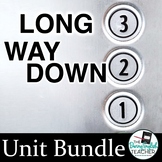
Description
Engage your students in an end-of-unit Long Way Down argument essay after completing the book. This essay packet includes everything you need to assign your students an argumentative essay for Long Way Down: the essay assignment sheet, a brainstorming organizer, an essay-blocking handout, an essay outline, a peer editing form, and a rubric.

Questions & Answers
The daring english teacher.
- We're hiring
- Help & FAQ
- Privacy policy
- Student privacy
- Terms of service
- Tell us what you think
Long Way Down

52 pages • 1 hour read
A modern alternative to SparkNotes and CliffsNotes, SuperSummary offers high-quality Study Guides with detailed chapter summaries and analysis of major themes, characters, and more. For select classroom titles, we also provide Teaching Guides with discussion and quiz questions to prompt student engagement.
Chapter Summaries & Analyses
Character Analysis
Symbols & Motifs
Important Quotes
Essay Topics
Discussion Questions
Long Way Down is a novel written in verse. How does Reynolds use poetic form for emphasis?
How does Will judge The Rules? Why does he enact them but refuse to claim them as something he and his male family members helped create and perpetuate?
What does Will’s mother’s eczema symbolize in the novel? Why is it significant?

Don't Miss Out!
Access Study Guide Now
Related Titles
By Jason Reynolds

All American Boys
Brendan Kiely, Jason Reynolds
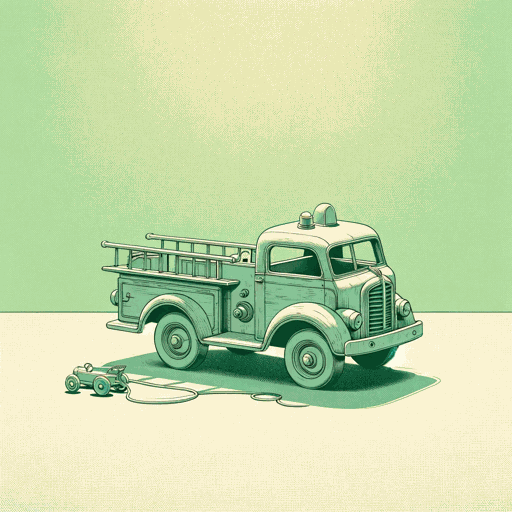
As Brave As You
Jason Reynolds

For Every One

Look Both Ways: A Tale Told in Ten Blocks
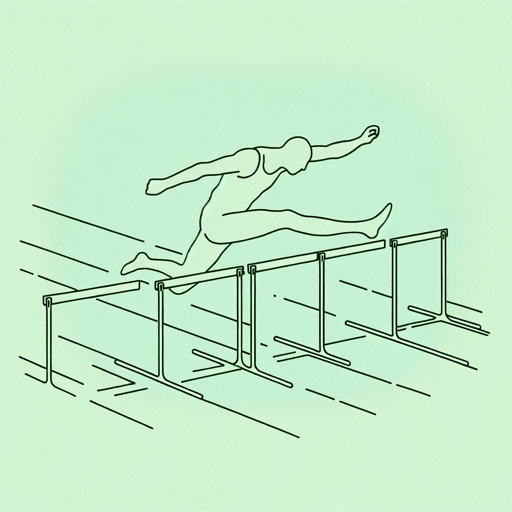
Miles Morales: Spider-Man
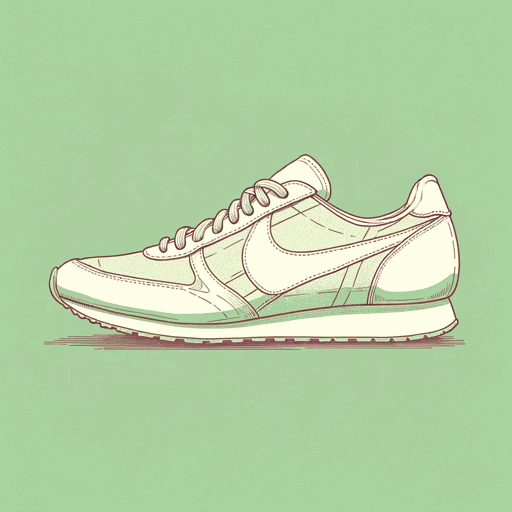
Stamped: Racism, Antiracism, and You
Ibram X. Kendi, Jason Reynolds

The Boy in the Black Suit
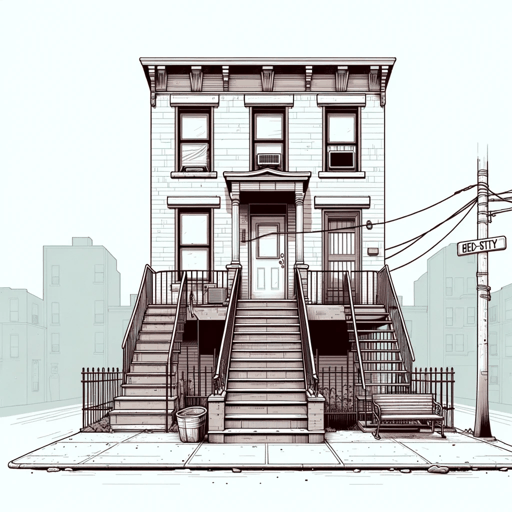
When I Was the Greatest
Featured Collections
Coretta Scott King Award
View Collection
Novels & Books in Verse
Realistic Fiction (High School)
- Writing Home
- Writing Advice Home
Organizing an Essay
- Printable PDF Version
- Fair-Use Policy
Some basic guidelines
The best time to think about how to organize your paper is during the pre-writing stage, not the writing or revising stage. A well-thought-out plan can save you from having to do a lot of reorganizing when the first draft is completed. Moreover, it allows you to pay more attention to sentence-level issues when you sit down to write your paper.
When you begin planning, ask the following questions: What type of essay am I going to be writing? Does it belong to a specific genre? In university, you may be asked to write, say, a book review, a lab report, a document study, or a compare-and-contrast essay. Knowing the patterns of reasoning associated with a genre can help you to structure your essay.
For example, book reviews typically begin with a summary of the book you’re reviewing. They then often move on to a critical discussion of the book’s strengths and weaknesses. They may conclude with an overall assessment of the value of the book. These typical features of a book review lead you to consider dividing your outline into three parts: (1) summary; (2) discussion of strengths and weaknesses; (3) overall evaluation. The second and most substantial part will likely break down into two sub-parts. It is up to you to decide the order of the two subparts—whether to analyze strengths or weaknesses first. And of course it will be up to you to come up with actual strengths and weaknesses.
Be aware that genres are not fixed. Different professors will define the features of a genre differently. Read the assignment question carefully for guidance.
Understanding genre can take you only so far. Most university essays are argumentative, and there is no set pattern for the shape of an argumentative essay. The simple three-point essay taught in high school is far too restrictive for the complexities of most university assignments. You must be ready to come up with whatever essay structure helps you to convince your reader of the validity of your position. In other words, you must be flexible, and you must rely on your wits. Each essay presents a fresh problem.
Avoiding a common pitfall
Though there are no easy formulas for generating an outline, you can avoid one of the most common pitfalls in student papers by remembering this simple principle: the structure of an essay should not be determined by the structure of its source material. For example, an essay on an historical period should not necessarily follow the chronology of events from that period. Similarly, a well-constructed essay about a literary work does not usually progress in parallel with the plot. Your obligation is to advance your argument, not to reproduce the plot.
If your essay is not well structured, then its overall weaknesses will show through in the individual paragraphs. Consider the following two paragraphs from two different English essays, both arguing that despite Hamlet’s highly developed moral nature he becomes morally compromised in the course of the play:
(a) In Act 3, Scene 4, Polonius hides behind an arras in Gertrude’s chamber in order to spy on Hamlet at the bidding of the king. Detecting something stirring, Hamlet draws his sword and kills Polonius, thinking he has killed Claudius. Gertrude exclaims, “O, what a rash and bloody deed is this!” (28), and her words mark the turning point in Hamlet’s moral decline. Now Hamlet has blood on his hands, and the blood of the wrong person. But rather than engage in self-criticism, Hamlet immediately turns his mother’s words against her: “A bloody deed — almost as bad, good Mother, as kill a king, and marry with his brother” (29-30). One of Hamlet’s most serious shortcomings is his unfair treatment of women. He often accuses them of sins they could not have committed. It is doubtful that Gertrude even knows Claudius killed her previous husband. Hamlet goes on to ask Gertrude to compare the image of the two kings, old Hamlet and Claudius. In Hamlet’s words, old Hamlet has “Hyperion’s curls,” the front of Jove,” and “an eye like Mars” (57-58). Despite Hamlet’s unfair treatment of women, he is motivated by one of his better qualities: his idealism. (b) One of Hamlet’s most serious moral shortcomings is his unfair treatment of women. In Act 3, Scene 1, he denies to Ophelia ever having expressed his love for her, using his feigned madness as cover for his cruelty. Though his rantings may be an act, they cannot hide his obsessive anger at one particular woman: his mother. He counsels Ophelia to “marry a fool, for wise men know well enough what monsters you make of them” (139-41), thus blaming her in advance for the sin of adultery. The logic is plain: if Hamlet’s mother made a cuckold out of Hamlet’s father, then all women are capable of doing the same and therefore share the blame. The fact that Gertrude’s hasty remarriage does not actually constitute adultery only underscores Hamlet’s tendency to find in women faults that do not exist. In Act 3, Scene 4, he goes as far as to suggest that Gertrude shared responsibility in the murder of Hamlet’s father (29-30). By condemning women for actions they did not commit, Hamlet is doing just what he accuses Guildenstern of doing to him: he is plucking out the “heart” of their “mystery” (3.2.372-74).
The second of these two paragraphs is much stronger, largely because it is not plot-driven. It makes a well-defined point about Hamlet’s moral nature and sticks to that point throughout the paragraph. Notice that the paragraph jumps from one scene to another as is necessary, but the logic of the argument moves along a steady path. At any given point in your essays, you will want to leave yourself free to go wherever you need to in your source material. Your only obligation is to further your argument. Paragraph (a) sticks closely to the narrative thread of Act 3, Scene 4, and as a result the paragraph makes several different points with no clear focus.
What does an essay outline look like?
Most essay outlines will never be handed in. They are meant to serve you and no one else. Occasionally, your professor will ask you to hand in an outline weeks prior to handing in your paper. Usually, the point is to ensure that you are on the right track. Nevertheless, when you produce your outline, you should follow certain basic principles. Here is an example of an outline for an essay on Hamlet :
This is an example of a sentence outline. Another kind of outline is the topic outline. It consists of fragments rather than full sentences. Topic outlines are more open-ended than sentence outlines: they leave much of the working out of the argument for the writing stage.
When should I begin putting together a plan?
The earlier you begin planning, the better. It is usually a mistake to do all of your research and note-taking before beginning to draw up an outline. Of course, you will have to do some reading and weighing of evidence before you start to plan. But as a potential argument begins to take shape in your mind, you may start to formalize your thoughts in the form of a tentative plan. You will be much more efficient in your reading and your research if you have some idea of where your argument is headed. You can then search for evidence for the points in your tentative plan while you are reading and researching. As you gather evidence, those points that still lack evidence should guide you in your research. Remember, though, that your plan may need to be modified as you critically evaluate your evidence.
How can I construct a usable plan?
Here are two methods for constructing a plan. The first works best on the computer. The second method works well for those who think visually. It is often the method of choice for those who prefer to do some of their thinking with pen and paper, though it can easily be transposed to a word processor or your graphic software of choice.
method 1: hierarchical outline
This method usually begins by taking notes. Start by collecting potential points, as well as useful quotations and paraphrases of quotations, consecutively. As you accumulate notes, identify key points and start to arrange those key points into an outline. To build your outline, take advantage of outline view in Word or numbered lists in Google Docs. Or consider one of the specialized apps designed to help organize ideas: Scrivener, Microsoft OneNote, Workflowy, among others. All these tools make it easy for you to arrange your points hierarchically and to move those points around as you refine your plan.You may, at least initially, keep your notes and your outline separate. But there is no reason for you not to integrate your notes into the plan. Your notes—minor points, quotations, and paraphrases—can all be interwoven into the plan, just below the main points they support. Some of your notes may not find a place in your outline. If so, either modify the plan or leave those points out.
method 2: the circle method
This method is designed to get your key ideas onto a single page, where you can see them all at once. When you have an idea, write it down, and draw a circle around it. When you have an idea that supports another idea, do the same, but connect the two circles with a line. Supporting source material can be represented concisely by a page reference inside a circle. The advantage of the circle method is that you can see at a glance how things tie together; the disadvantage is that there is a limit to how much material you can cram onto a page.
Here is part of a circle diagram
Once you are content with your diagram, you have the option of turning it into an essay outline.
What is a reverse outline?
When you have completed your first draft, and you think your paper can be better organized, consider using a reverse outline. Reverse outlines are simple to create. Just read through your essay, and every time you make a new point, summarize it in the margin. If the essay is reasonably well-organized, you should have one point in the margin for each paragraph, and your points read out in order should form a coherent argument. You might, however, discover that some of your points are repeated at various places in your essay. Other points may be out of place, and still other key points may not appear at all. Think of all these points as the ingredients of an improved outline which you now must create. Use this new outline to cut and paste the sentences into a revised version of your essay, consolidating points that appear in several parts of your essay while eliminating repetition and creating smooth transitions where necessary.
You can improve even the most carefully planned essay by creating a reverse outline after completing your first draft. The process of revision should be as much about organization as it is about style.
How much of my time should I put into planning?
It is self-evident that a well-planned paper is going to be better organized than a paper that was not planned out. Thinking carefully about how you are going to argue your paper and preparing an outline can only add to the quality of your final product. Nevertheless, some people find it more helpful than others to plan. Those who are good at coming up with ideas but find writing difficult often benefit from planning. By contrast, those who have trouble generating ideas but find writing easy may benefit from starting to write early. Putting pen to paper (or typing away at the keyboard) may be just what is needed to get the ideas to flow.
You have to find out for yourself what works best for you, though it is fair to say that at least some planning is always a good idea. Think about whether your current practices are serving you well. You know you’re planning too little if the first draft of your essays is always a disorganized mess, and you have to spend a disproportionate amount of time creating reverse outlines and cutting and pasting material. You know you’re planning too much if you always find yourself writing your paper a day before it’s due after spending weeks doing research and devising elaborate plans.
Be aware of the implications of planning too little or too much.
Planning provides the following advantages :
- helps you to produce a logical and orderly argument that your readers can follow
- helps you to produce an economical paper by allowing you to spot repetition
- helps you to produce a thorough paper by making it easier for you to notice whether you have left anything out
- makes drafting the paper easier by allowing you to concentrate on writing issues such as grammar, word choice, and clarity
Overplanning poses the following risks :
- doesn’t leave you enough time to write and revise
- leads you to produce papers that try to cover too much ground at the expense of analytic depth
- can result in a writing style that lacks spontaneity and ease
- does not provide enough opportunity to discover new ideas in the process of writing
Have a language expert improve your writing
Run a free plagiarism check in 10 minutes, generate accurate citations for free.
- Knowledge Base
- How to structure an essay: Templates and tips
How to Structure an Essay | Tips & Templates
Published on September 18, 2020 by Jack Caulfield . Revised on July 23, 2023.
The basic structure of an essay always consists of an introduction , a body , and a conclusion . But for many students, the most difficult part of structuring an essay is deciding how to organize information within the body.
Instantly correct all language mistakes in your text
Upload your document to correct all your mistakes in minutes

Table of contents
The basics of essay structure, chronological structure, compare-and-contrast structure, problems-methods-solutions structure, signposting to clarify your structure, other interesting articles, frequently asked questions about essay structure.
There are two main things to keep in mind when working on your essay structure: making sure to include the right information in each part, and deciding how you’ll organize the information within the body.
Parts of an essay
The three parts that make up all essays are described in the table below.
Order of information
You’ll also have to consider how to present information within the body. There are a few general principles that can guide you here.
The first is that your argument should move from the simplest claim to the most complex . The body of a good argumentative essay often begins with simple and widely accepted claims, and then moves towards more complex and contentious ones.
For example, you might begin by describing a generally accepted philosophical concept, and then apply it to a new topic. The grounding in the general concept will allow the reader to understand your unique application of it.
The second principle is that background information should appear towards the beginning of your essay . General background is presented in the introduction. If you have additional background to present, this information will usually come at the start of the body.
The third principle is that everything in your essay should be relevant to the thesis . Ask yourself whether each piece of information advances your argument or provides necessary background. And make sure that the text clearly expresses each piece of information’s relevance.
The sections below present several organizational templates for essays: the chronological approach, the compare-and-contrast approach, and the problems-methods-solutions approach.
Receive feedback on language, structure, and formatting
Professional editors proofread and edit your paper by focusing on:
- Academic style
- Vague sentences
- Style consistency
See an example

The chronological approach (sometimes called the cause-and-effect approach) is probably the simplest way to structure an essay. It just means discussing events in the order in which they occurred, discussing how they are related (i.e. the cause and effect involved) as you go.
A chronological approach can be useful when your essay is about a series of events. Don’t rule out other approaches, though—even when the chronological approach is the obvious one, you might be able to bring out more with a different structure.
Explore the tabs below to see a general template and a specific example outline from an essay on the invention of the printing press.
- Thesis statement
- Discussion of event/period
- Consequences
- Importance of topic
- Strong closing statement
- Claim that the printing press marks the end of the Middle Ages
- Background on the low levels of literacy before the printing press
- Thesis statement: The invention of the printing press increased circulation of information in Europe, paving the way for the Reformation
- High levels of illiteracy in medieval Europe
- Literacy and thus knowledge and education were mainly the domain of religious and political elites
- Consequence: this discouraged political and religious change
- Invention of the printing press in 1440 by Johannes Gutenberg
- Implications of the new technology for book production
- Consequence: Rapid spread of the technology and the printing of the Gutenberg Bible
- Trend for translating the Bible into vernacular languages during the years following the printing press’s invention
- Luther’s own translation of the Bible during the Reformation
- Consequence: The large-scale effects the Reformation would have on religion and politics
- Summarize the history described
- Stress the significance of the printing press to the events of this period
Essays with two or more main subjects are often structured around comparing and contrasting . For example, a literary analysis essay might compare two different texts, and an argumentative essay might compare the strengths of different arguments.
There are two main ways of structuring a compare-and-contrast essay: the alternating method, and the block method.
Alternating
In the alternating method, each paragraph compares your subjects in terms of a specific point of comparison. These points of comparison are therefore what defines each paragraph.
The tabs below show a general template for this structure, and a specific example for an essay comparing and contrasting distance learning with traditional classroom learning.
- Synthesis of arguments
- Topical relevance of distance learning in lockdown
- Increasing prevalence of distance learning over the last decade
- Thesis statement: While distance learning has certain advantages, it introduces multiple new accessibility issues that must be addressed for it to be as effective as classroom learning
- Classroom learning: Ease of identifying difficulties and privately discussing them
- Distance learning: Difficulty of noticing and unobtrusively helping
- Classroom learning: Difficulties accessing the classroom (disability, distance travelled from home)
- Distance learning: Difficulties with online work (lack of tech literacy, unreliable connection, distractions)
- Classroom learning: Tends to encourage personal engagement among students and with teacher, more relaxed social environment
- Distance learning: Greater ability to reach out to teacher privately
- Sum up, emphasize that distance learning introduces more difficulties than it solves
- Stress the importance of addressing issues with distance learning as it becomes increasingly common
- Distance learning may prove to be the future, but it still has a long way to go
In the block method, each subject is covered all in one go, potentially across multiple paragraphs. For example, you might write two paragraphs about your first subject and then two about your second subject, making comparisons back to the first.
The tabs again show a general template, followed by another essay on distance learning, this time with the body structured in blocks.
- Point 1 (compare)
- Point 2 (compare)
- Point 3 (compare)
- Point 4 (compare)
- Advantages: Flexibility, accessibility
- Disadvantages: Discomfort, challenges for those with poor internet or tech literacy
- Advantages: Potential for teacher to discuss issues with a student in a separate private call
- Disadvantages: Difficulty of identifying struggling students and aiding them unobtrusively, lack of personal interaction among students
- Advantages: More accessible to those with low tech literacy, equality of all sharing one learning environment
- Disadvantages: Students must live close enough to attend, commutes may vary, classrooms not always accessible for disabled students
- Advantages: Ease of picking up on signs a student is struggling, more personal interaction among students
- Disadvantages: May be harder for students to approach teacher privately in person to raise issues
An essay that concerns a specific problem (practical or theoretical) may be structured according to the problems-methods-solutions approach.
This is just what it sounds like: You define the problem, characterize a method or theory that may solve it, and finally analyze the problem, using this method or theory to arrive at a solution. If the problem is theoretical, the solution might be the analysis you present in the essay itself; otherwise, you might just present a proposed solution.
The tabs below show a template for this structure and an example outline for an essay about the problem of fake news.
- Introduce the problem
- Provide background
- Describe your approach to solving it
- Define the problem precisely
- Describe why it’s important
- Indicate previous approaches to the problem
- Present your new approach, and why it’s better
- Apply the new method or theory to the problem
- Indicate the solution you arrive at by doing so
- Assess (potential or actual) effectiveness of solution
- Describe the implications
- Problem: The growth of “fake news” online
- Prevalence of polarized/conspiracy-focused news sources online
- Thesis statement: Rather than attempting to stamp out online fake news through social media moderation, an effective approach to combating it must work with educational institutions to improve media literacy
- Definition: Deliberate disinformation designed to spread virally online
- Popularization of the term, growth of the phenomenon
- Previous approaches: Labeling and moderation on social media platforms
- Critique: This approach feeds conspiracies; the real solution is to improve media literacy so users can better identify fake news
- Greater emphasis should be placed on media literacy education in schools
- This allows people to assess news sources independently, rather than just being told which ones to trust
- This is a long-term solution but could be highly effective
- It would require significant organization and investment, but would equip people to judge news sources more effectively
- Rather than trying to contain the spread of fake news, we must teach the next generation not to fall for it
Here's why students love Scribbr's proofreading services
Discover proofreading & editing
Signposting means guiding the reader through your essay with language that describes or hints at the structure of what follows. It can help you clarify your structure for yourself as well as helping your reader follow your ideas.
The essay overview
In longer essays whose body is split into multiple named sections, the introduction often ends with an overview of the rest of the essay. This gives a brief description of the main idea or argument of each section.
The overview allows the reader to immediately understand what will be covered in the essay and in what order. Though it describes what comes later in the text, it is generally written in the present tense . The following example is from a literary analysis essay on Mary Shelley’s Frankenstein .
Transitions
Transition words and phrases are used throughout all good essays to link together different ideas. They help guide the reader through your text, and an essay that uses them effectively will be much easier to follow.
Various different relationships can be expressed by transition words, as shown in this example.
Because Hitler failed to respond to the British ultimatum, France and the UK declared war on Germany. Although it was an outcome the Allies had hoped to avoid, they were prepared to back up their ultimatum in order to combat the existential threat posed by the Third Reich.
Transition sentences may be included to transition between different paragraphs or sections of an essay. A good transition sentence moves the reader on to the next topic while indicating how it relates to the previous one.
… Distance learning, then, seems to improve accessibility in some ways while representing a step backwards in others.
However , considering the issue of personal interaction among students presents a different picture.
If you want to know more about AI tools , college essays , or fallacies make sure to check out some of our other articles with explanations and examples or go directly to our tools!
- Ad hominem fallacy
- Post hoc fallacy
- Appeal to authority fallacy
- False cause fallacy
- Sunk cost fallacy
College essays
- Choosing Essay Topic
- Write a College Essay
- Write a Diversity Essay
- College Essay Format & Structure
- Comparing and Contrasting in an Essay
(AI) Tools
- Grammar Checker
- Paraphrasing Tool
- Text Summarizer
- AI Detector
- Plagiarism Checker
- Citation Generator
The structure of an essay is divided into an introduction that presents your topic and thesis statement , a body containing your in-depth analysis and arguments, and a conclusion wrapping up your ideas.
The structure of the body is flexible, but you should always spend some time thinking about how you can organize your essay to best serve your ideas.
An essay isn’t just a loose collection of facts and ideas. Instead, it should be centered on an overarching argument (summarized in your thesis statement ) that every part of the essay relates to.
The way you structure your essay is crucial to presenting your argument coherently. A well-structured essay helps your reader follow the logic of your ideas and understand your overall point.
Comparisons in essays are generally structured in one of two ways:
- The alternating method, where you compare your subjects side by side according to one specific aspect at a time.
- The block method, where you cover each subject separately in its entirety.
It’s also possible to combine both methods, for example by writing a full paragraph on each of your topics and then a final paragraph contrasting the two according to a specific metric.
You should try to follow your outline as you write your essay . However, if your ideas change or it becomes clear that your structure could be better, it’s okay to depart from your essay outline . Just make sure you know why you’re doing so.
Cite this Scribbr article
If you want to cite this source, you can copy and paste the citation or click the “Cite this Scribbr article” button to automatically add the citation to our free Citation Generator.
Caulfield, J. (2023, July 23). How to Structure an Essay | Tips & Templates. Scribbr. Retrieved April 10, 2024, from https://www.scribbr.com/academic-essay/essay-structure/
Is this article helpful?

Jack Caulfield
Other students also liked, comparing and contrasting in an essay | tips & examples, how to write the body of an essay | drafting & redrafting, transition sentences | tips & examples for clear writing, what is your plagiarism score.
Skip to content. | Skip to navigation
Masterlinks
- About Hunter
- One Stop for Students
- Make a Gift
- Access the Student Guide
- Apply to Become a Peer Tutor
- Access the Faculty Guide
- Request a Classroom Visit
- Refer a Student to the Center
- Request a Classroom Workshop
- The Writing Process
- The Documented Essay/Research Paper
- Writing for English Courses
- Writing Across the Curriculum
- Grammar and Mechanics
- Business and Professional Writing
- CUNY TESTING
- | Workshops
- Research Information and Resources
- Evaluating Information Sources
- Writing Tools and References
- Reading Room
- Literary Resources
- ESL Resources for Students
- ESL Resources for Faculty
- Teaching and Learning
- | Contact Us
Many types of writing follow some version of the basic shape described above. This shape is most obvious in the form of the traditional five-paragraph essay: a model for college writing in which the writer argues his or her viewpoint (thesis) on a topic and uses three reasons or subtopics to support that position. In the five-paragraph model, as illustrated below, the introductory paragraph mentions the three main points or subtopics, and each body paragraph begins with a topic sentence dealing with one of those main points.
SAMPLE ESSAY USING THE FIVE-PARAGRAPH MODEL
Remember, this is a very simplistic model. It presents a basic idea of essay organization and may certainly be helpful in learning to structure an argument, but it should not be followed religiously as an ideal form.
Document Actions
- Public Safety
- Website Feedback
- Privacy Policy
- CUNY Tobacco Policy
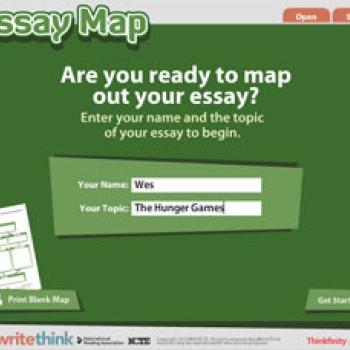
About this Interactive
Related resources.
Expository writing is an increasingly important skill for elementary, middle, and high school students to master. This interactive graphic organizer helps students develop an outline that includes an introductory statement, main ideas they want to discuss or describe, supporting details, and a conclusion that summarizes the main ideas. The tool offers multiple ways to navigate information including a graphic in the upper right-hand corner that allows students to move around the map without having to work in a linear fashion. The finished map can be saved, e-mailed, or printed.
- Student Interactives
- Strategy Guides
- Lesson Plans
- Calendar Activities
The Persuasion Map is an interactive graphic organizer that enables students to map out their arguments for a persuasive essay or debate.
This Strategy Guide describes the processes involved in composing and producing audio files that are published online as podcasts.
This strategy guide explains the writing process and offers practical methods for applying it in your classroom to help students become proficient writers.
This strategy guide clarifies the difference between persuasion and argumentation, stressing the connection between close reading of text to gather evidence and formation of a strong argumentative claim about text.
Students will identify how Martin Luther King Jr.'s dream of nonviolent conflict-resolution is reinterpreted in modern texts. Homework is differentiated to prompt discussion on how nonviolence is portrayed through characterization and conflict. Students will be formally assessed on a thesis essay that addresses the Six Kingian Principles of Nonviolence.
Students develop their reading, writing, research, and technology skills using graphic novels. As a final activity, students create their own graphic novels using comic software.
Students are encouraged to understand a book that the teacher reads aloud to create a new ending for it using the writing process.
While drafting a literary analysis essay (or another type of argument) of their own, students work in pairs to investigate advice for writing conclusions and to analyze conclusions of sample essays. They then draft two conclusions for their essay, select one, and reflect on what they have learned through the process.
Students analyze rhetorical strategies in online editorials, building knowledge of strategies and awareness of local and national issues. This lesson teaches students connections between subject, writer, and audience and how rhetorical strategies are used in everyday writing.
It's not easy surviving fourth grade (or third or fifth)! In this lesson, students brainstorm survival tips for future fourth graders and incorporate those tips into an essay.
Students explore the nature and structure of expository texts that focus on cause and effect and apply what they learned using graphic organizers and writing paragraphs to outline cause-and-effect relationships.
Students prepare an already published scholarly article for presentation, with an emphasis on identification of the author's thesis and argument structure.
- Print this resource
Explore Resources by Grade
- Kindergarten K

Essay Mapping Tool
Instructions.
Effective writing at university is a process:
Analyse the task → Gather content → Plan → Draft → Edit
This tool may help you to bridge from planning to drafting by helping you arrange your sentences in a logical order. It also provides tips for each component of an essay – the introduction, body, and conclusion. It can be used to improve your understanding of essay writing in general or as a planning tool for one of your university assignments.
Because this tool is for your personal use only, you may decide to write in bullet points, but we recommend full sentences. Once you have filled in each section, a complete essay overview will be generated which can be printed.
1. Introduction
Three paragraphs planning spaces have been provided for you. You can add or delete as necessary.
The purpose of the body is to logically develop the points made in your thesis and outline statements. There are no rules about the number of paragraphs required in assignment, but in general, you are advised to develop one idea per paragraph. This is done with a clear and coherent structure which introduces the topic in a topic sentence, defines or clarifies which aspect of the topic you are going to discuss, develops and supports your discussion and (optionally) concludes your discussion.
A topic sentence generally has two parts. You may refer to the overall essay topic and also introduce the specific aspect you plan to discuss in this paragraph. This is referred to as topic + controlling idea . You can also use a topic sentence to link to or contrast with the previous paragraph. This is an effective strategy to use with the second body paragraph onwards. You may choose to conclude the paragraph with a summary sentence; however, you are advised not to overuse this type of sentence as it may seem repetitious.
Cohesion and coherence refer to how effectively sentences are connected and how smoothly the writing flows. This is not simply achieved by following a logical paragraph structure, but also by using linking words (e.g. however/furthermore/consequently ) and referring words (e.g. this/that/these/those )
When you develop your argument, remember to use a range of support. You can use examples, logical reasoning, speculation, statistics and citations
Paragraph 1
Write the topic and controlling idea (one sentence).
Support your controlling idea using evidence, examples, elaboration or explanations. Do not go off topic. Do use in-text references.
Sum up the paragraph and link to your thesis OR link to the next paragraph (one sentence).
Paragraph 2
Paragraph 3, 3. conclusion.
The purpose of the conclusion is to summarize the key points you have discussed; however, it often contains a paraphrase of the thesis statement. This helps link the whole essay together. A conclusion may also contain a statement which links the essay to the broader topic or suggests a future action.
You can begin with the phrase ' In conclusion, ' but there are other phrases you could consider: In summary/This assignment has…/In this essay, I have… . Avoid Finally/Briefly/
Remember to reference any sources you have used. Refer to CDU Library for more information on referencing.
Introduction
To save as a PDF, click the Print button and then change your printer destination to "Save As PDF".
Scroll for more content

IMAGES
VIDEO
COMMENTS
Teaching Long Way Down: My name is poem. The second poem of the novel is "MY NAME IS.". It is a poem where Will introduces himself to the audience. Before diving all the way into the novel, read this poem with your students first. After reading this poem, have them work on their own name poem that follows the same structure as "MY NAME IS
development as a writer and poet. Write a well-organized essay, prepare and deliver a speech, or create an interactive hyperdoc in which you examine the role of his hop--in both style and content—as it impacts the novel Long Way Down. Narrative - Write a sequel or expand the existing text of Long Way Down by imagining a
I've put together 10 fresh ideas for implementing Long Way Down by Jason Reynolds into your secondary English Language Arts classroom. 1. Character Study. Understand the characters of the novel on a deeper level. Have students complete a character study on Will (or any of the other characters he sees throughout the novel).
Though Reynolds has said he no longer crochets to unwind, he used to be an avid crochet hobbyist. Crochet, he's said, taught him the value of going slowly and taking life one step—or one stitch—at a time. The best study guide to Long Way Down on the planet, from the creators of SparkNotes. Get the summaries, analysis, and quotes you need.
Having students create a mind map is a research-based strategy that helps students understand concepts and ideas. A mind map is a diagram created with visually-organized notes. When I have my students create mind maps, I like to provide them with tabloid-sized paper so that they have more space to add in their information.
Setting Lesson Plan for Long Way Down. Lesson Plan Intro In this lesson plan, students examine how setting affects the story in Long Way Down, and how William's conflicts and choices are the product of his surroundings. The setting in Long Way Down by Jason Reynolds exerts a great influence over the story and its characters.
Lesson Plan Intro. In this lesson plan, students examine how setting affects the story in Long Way Down, and how William's conflicts and choices are the product of his surroundings.. The setting in Long Way Down by Jason Reynolds exerts a great influence over the story and its characters. This influence goes beyond the physical world William Hollomon lives in; it also includes the culture ...
Long Way Down is a 2017 novel by Jason Reynolds that follows main character Will Holloman as he struggles to come to terms with his grief and anger in the aftermath of his brother Shawn's death due to a gang-related shooting.Told in short, powerful verse, the novel explores the tenacity of the cycle of violence, the pain of toxic masculinity, and the dangers of repressed grief.
Description. Increase student engagement and understanding as you read Jason Reynold' novel Long Way Down with these interactive and hands-on sticky note literary analysis organizers. Students will enjoy using sticky notes in class as they analyze complex short stories and novels. This sticky note literary analysis activity unit includes 11 ...
The Daring English Teacher. Engage your students in an end-of-unit Long Way Down argument essay after completing the book. This essay packet includes everything you need to assign your students an argumentative essay for Long Way Down: the essay assignment sheet, a brainstorming organizer, an essay -blocking handout, an essay outline, a peer ...
Each argument you will make in an essay will be different, but this strategy will often be a useful first step in figuring out the path of your argument. Strategy #2: Use subheadings, even if you remove then later Scientific papers generally include standard subheadings to delineate different sections
Engage your students in an end-of-unit Long Way Down argument essay after completing the book.This essay packet includes everything you need to assign your students an argumentative essay for Long Way Down: the essay assignment sheet, a brainstorming organizer, an essay-blocking handout, an essay outline, a peer editing form, and a rubric.
Jason Reynolds is a poet and novelist who combines the two genres in his verse novel, Long Way Down. The world's oldest examples of storytelling, including the Epic of Gilgamesh and the Homeric ...
Thanks for exploring this SuperSummary Study Guide of "Long Way Down" by Jason Reynolds. A modern alternative to SparkNotes and CliffsNotes, SuperSummary offers high-quality Study Guides with detailed chapter summaries and analysis of major themes, characters, and more. For select classroom titles, we also provide Teaching Guides with discussion and quiz questions to prompt student engagement.
Long Way Down Essay Organizer: CHARACTER CHANGE Graphic organizer color guide: Black = part of the organizer Green = Ms. Hamilton's helpful comments/ tips Red = your typing/ sentence starters you may use *you do NOT have to use my sentence starters; they are there as an option if you find yourself stuck.
method 2: the circle method. This method is designed to get your key ideas onto a single page, where you can see them all at once. When you have an idea, write it down, and draw a circle around it. When you have an idea that supports another idea, do the same, but connect the two circles with a line.
April 29, 2022 Long Way Down Essay In the novel Long Way Down, by Jason Reynolds, Will Holloman finds himself motivated to seek revenge after his older brother Shawn falls victim to the gun violence that disproportionately ravaged their neighborhood. Will's journey for revenge places him in an elevator where he is joined by familiar ghosts, who like Shawn are victims of gun violence.
The basic structure of an essay always consists of an introduction, a body, and a conclusion. But for many students, the most difficult part of structuring an essay is deciding how to organize information within the body. This article provides useful templates and tips to help you outline your essay, make decisions about your structure, and ...
A short summary of Jason Reynolds's Long Way Down. This free synopsis covers all the crucial plot points of Long Way Down. Search all of SparkNotes Search. Suggestions. Use up and down arrows to review and enter to select. ... SparkNotes PLUS Annual Plan - Group Discount. Qty: 00. Subtotal US $ 0,000.00. Discount (00 % off ...
Organizing an Essay. Organizing ideas and information clearly and logically in an essay, so that readers will understand and be able to follow the writer's thinking, is an essential stage of the writing process, but one that often proves to be more difficult than it sounds. When people write, ideas tend to come out in whatever order they occur ...
Grades. Launch the tool! Expository writing is an increasingly important skill for elementary, middle, and high school students to master. This interactive graphic organizer helps students develop an outline that includes an introductory statement, main ideas they want to discuss or describe, supporting details, and a conclusion that summarizes ...
Strategy #1: Decompose your thesis into paragraphs. A clear, arguable thesis will tell your readers where you are going to end up, but it can also help you figure out how to get them there. Put your thesis at the top of a blank page and then make a list of the points you will need to make to argue that thesis effectively.
A topic sentence generally has two parts. You may refer to the overall essay topic and also introduce the specific aspect you plan to discuss in this paragraph. This is referred to as topic + controlling idea. You can also use a topic sentence to link to or contrast with the previous paragraph. This is an effective strategy to use with the ...